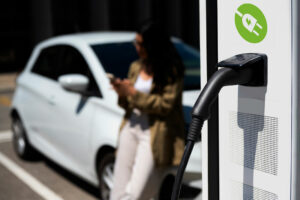Southeast Asia’s electric vehicle (EV) market is undeniably at a different stage compared to the US, Europe, and even China. While EV markets in the US and Europe may soon experience a slowdown, Southeast Asia remains in the early adoption phase, albeit facing its own unique challenges.
Despite Tesla’s recent entry into the Philippine market, I expect Chinese manufacturers to continue dominating the EV landscape, not only in the Philippines but across Southeast Asia. China enjoys key advantages, including geographical proximity to the region and established trade partnerships.
More importantly, Chinese EVs are competitively priced. Manufacturers from China have already gained significant experience in producing EVs for their domestic market, Southeast Asia, and other emerging economies. Their pricing strategy and production expertise make them highly appealing to price-sensitive markets like the Philippines. That said, growth in sales across the region still faces considerable headwinds, primarily related to charging infrastructure rather than the vehicles themselves.
In the Philippines, EV adoption faces several hurdles despite government incentives. The most pressing challenge is the lack of charging stations, especially in areas outside major urban centers. Even in metropolitan hubs, the availability of reliable charging infrastructure is limited, leading to range anxiety among potential buyers. Compounding this issue is the questionable reliability of the national power grid. Many doubt whether the current energy infrastructure can support widespread EV charging throughout the year, particularly during peak seasons.
Another critical factor is pricing. While incentives can help reduce costs, EVs are generally more expensive than traditional gasoline or diesel vehicles. The Philippines, being a price-sensitive market, presents a unique challenge for EV adoption. Most Filipino buyers prioritize affordability, practicality, and versatility in their vehicle choices. Unfortunately, the current EV market lacks the diversity of models and price points available in the traditional vehicle segment. This limits options for consumers, especially those looking for budget-friendly alternatives.
Consumer education remains another barrier. Despite efforts by automakers to promote EV awareness, many Filipinos remain unfamiliar with the range of EV technologies and how they differ. For instance, distinctions between hybrids, plug-in hybrids, and full electric vehicles remain unclear to a large portion of the market. Understandably, consumers are still concerned about battery range, battery life, maintenance costs, and overall durability — particularly for Chinese brands, which are still building trust among Filipino buyers.
Tesla’s entry into the market, however, brings a new dynamic. Given the brand’s global reputation and strong performance in the US, its arrival has already sparked excitement among affluent, US-oriented Filipino consumers. Tesla’s presence will undoubtedly boost interest in EVs and could drive sales, especially in the premium segment. However, its impact may be limited due to its higher price point, which places Tesla vehicles out of reach for most Filipino buyers. Without a robust and reliable service network, Tesla may also struggle to scale its success in the Philippines.
Meanwhile, Chinese brands like BYD and MG are poised to dominate the Philippine market in the near term. Their pricing strategies and increasing availability make them attractive to Filipino consumers who seek affordable EV options. While Tesla may capture significant market share in the premium segment, overtaking Chinese brands across all categories will prove challenging.
Given these dynamics, the more practical Filipino buyer will likely favor hybrid vehicles over full EVs in the short to medium term. Hybrids serve as a “transition technology” because they retain the familiarity of gasoline-powered engines while addressing range anxiety. Unlike full EVs, hybrids do not rely on an extensive charging infrastructure, a major advantage in a country where charging stations remain scarce. As a result, hybrid vehicles may continue to outsell full EVs in the Philippines until at least the next decade.
However, there is hope that over time, prices of EVs will decline, and charging infrastructure will become as widespread as traditional fuel stations. These two developments — affordability and infrastructure — will ultimately drive the mass adoption of full EVs. Globally, the EV market is evolving rapidly, and local players are undoubtedly watching these trends closely. The challenge lies in adapting global innovations to the unique realities of the Philippine market.
In addition to infrastructure and pricing, external economic factors also play a critical role. Over the past few months, fuel prices have remained relatively stable, but the peso-dollar exchange rate has weakened. Any significant increase in fuel prices or further devaluation of the peso could influence consumer behavior, potentially accelerating the shift to more fuel-efficient or alternative energy vehicles. For many Filipino families, fuel costs are a major consideration, particularly during periods of economic uncertainty.
The Philippines can also look at attracting more foreign investment in EV manufacturing to reduce costs and stimulate local adoption. However, this will be a tough sell. Compared to neighbors like Thailand and Indonesia, which offer sizable markets, competitive incentives, and established automotive industries, the Philippines lags behind. Still, regional manufacturing hubs could bring down tariffs and shipping costs for EVs sold in the Philippines, indirectly benefiting consumers.
Available data highlights both challenges and opportunities in the Philippine EV market. In 2023, total EV sales exceeded 10,000 units, with over 9,000 of those being hybrid electric vehicles (HEVs). Despite this impressive jump, EVs still accounted for just 2% of total vehicle sales in 2023. The increase is significant when compared to 2022, where only about 1,000 EV units were sold — a tenfold growth in just one year.
In contrast, Thailand serves as a regional leader. EV sales in Thailand reached 76,000 units in 2023, representing 12% of all vehicles sold. By the first quarter of 2024, EV market share had climbed to 14%. The Thai government has set an ambitious target: by 2030, 30% of vehicle production in the country will be electric. Indonesia is also making impressive strides. In 2023, sales of two-wheeled EVs surged to over 62,000 units, while four-wheeled EVs reached 12,000 units. For 2024, Indonesia aims to sell at least 50,000 four-wheeled EVs.
The successes of Thailand and Indonesia underscore important lessons for the Philippines. Both countries have leveraged government support, incentives, and infrastructure development to accelerate EV adoption. For the Philippines, adopting a similar approach could drive growth and position the country as a serious player in the regional EV market.
Looking ahead, the role of Chinese manufacturers in the region will remain pivotal. Their early mover advantage has already paid dividends in Thailand and Indonesia, and this momentum is likely to continue. Ultimately, the future of the Philippine EV market hinges on the government’s ability to address infrastructure gaps, incentivize adoption, and create an environment conducive to investment.
While challenges remain, the rapid growth of EV markets in neighboring countries offers a blueprint for progress. With the right strategies in place, the Philippines has the potential to catch up and emerge as another key player in Southeast Asia’s electric mobility revolution.
Marvin Tort is a former managing editor of BusinessWorld, and a former chairman of the Philippine Press Council






